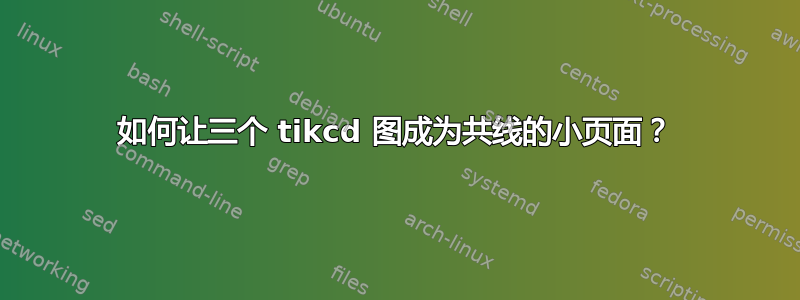
是的,就像我的问题所说的那样,我在处理这些小页面时遇到了麻烦。对于 2 个图表,它通常不会抱怨太多。在每个小页面的末尾,我都会得到过满的水平盒子,这很值得。
\documentclass[a4paper,12pt]{book}
\usepackage[english]{babel}
\usepackage{amsmath}
\usepackage{amssymb}
\usepackage{enumitem}
\usepackage[geometry]{ifsym}
\usepackage{tikz}
\usepackage{quiver}
\usepackage{float}
\usepackage{caption}
\usepackage{graphicx}
\usetikzlibrary{decorations.markings}
\usetikzlibrary{positioning}
\usepackage{textcomp}
\newcommand{\mbf}[1]{\mathbf{#1}}
\begin{document}
\begin{figure}
\centering
\begin{minipage}{0.1\textwidth}
\begin{tikzcd}
& & \bullet\text{ }a \\
b \text{ } \bullet \arrow[rru, "f", bend left] & & \\
& c \text{ } \bullet \arrow[lu, "g", bend left] \arrow[ruu, "h"', bend right] &
\end{tikzcd}
\end{minipage}{\caption*{$\mbf{G}$}}\hspace{0.1\textwidth}
\begin{minipage}{0.21\textwidth}
\begin{tikzcd}
& & \bullet\text{ }a \\
b \text{ } \bullet \arrow[rru, "f", bend left] & & \\
& c \text{ } \bullet \arrow[lu, "g", bend left] \arrow[ruu, "h"', bend right] &
\end{tikzcd}
\end{minipage}{\caption*{$\mbf{G}'$}}\hspace{0.1\textwidth}
\begin{minipage}{0.1\textwidth}
\begin{tikzcd}
& & \bullet \text{ } a \\
b \text{ } \bullet \arrow[rru, "f", bend left] & & \\
& c \text{ } \bullet \arrow[lu, "g", bend left] \arrow[ruu, "h"', bend right] &
\end{tikzcd}
\end{minipage}{\caption*{$\mbf{G}''$}}
\end{figure}
\end{document}
答案1
嗯,小页面的宽度太短了。我认为 atabular比较好。
如果缩小图表尺寸,它们会排成一行。A\[...\]更好,再加上一个技巧,让它们尽可能分开。
\documentclass[a4paper,12pt]{book}
\usepackage{amsmath}
\usepackage{tikz-cd}
\newcommand{\mbf}[1]{\mathbf{#1}}
\begin{document}
\[
\hspace{1em}
\begin{array}{@{}c@{}}
\begin{tikzcd}[sep=small]
& & \bullet\ a \\
b \ \bullet \arrow[rru, "f", bend left] & & \\
& c \text{ } \bullet \arrow[lu, "g", bend left] \arrow[ruu, "h"', bend right] &
\end{tikzcd}
\\
\mbf{G}
\end{array}
\hspace{1000pt minus 1fill}
\begin{array}{@{}c@{}}
\begin{tikzcd}[sep=small]
& & \bullet\ a \\
b \ \bullet \arrow[rru, "f", bend left] & & \\
& c \ \bullet \arrow[lu, "g", bend left] \arrow[ruu, "h"', bend right] &
\end{tikzcd}
\\
\mbf{G}'
\end{array}
\hspace{1000pt minus 1fill}
\begin{array}{@{}c@{}}
\begin{tikzcd}[sep=small]
& & \bullet\ a \\
b \ \bullet \arrow[rru, "f", bend left] & & \\
& c \ \bullet \arrow[lu, "g", bend left] \arrow[ruu, "h"', bend right] &
\end{tikzcd}
\\
\mbf{G}''
\end{array}
\hspace{1em}
\]
\end{document}
反斜杠空格比 更简单\text{ }。
请确保你展示的示例可以立即编译。你的示例不能,因为tikz-cd缺少并且quiver不符合标准(我在 CTAN 上没有看到它的踪迹)。



